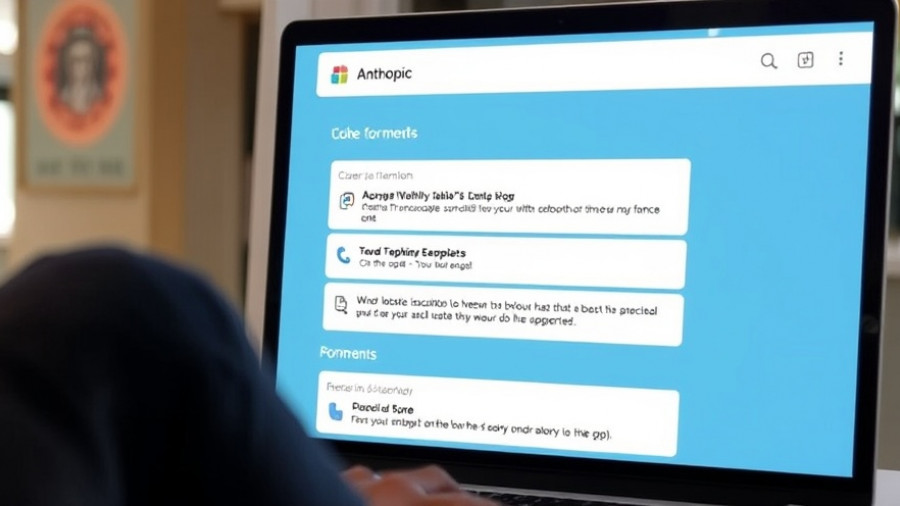
Understanding the AI Divide: Who Benefits?
The rise of artificial intelligence (AI) is creating a noticeable division between those who can harness its power and those who cannot. This 'AI divide' poses questions regarding access and equity in a rapidly advancing technological landscape. While AI applications offer unprecedented advantages for businesses and individuals, they also highlight glaring disparities in resources, skills, and opportunities.
How AI Is Reshaping the Workforce
The advent of AI is affecting job markets worldwide. On one hand, automation and AI tools can enhance productivity and efficiency. Companies utilizing AI systems, such as Claude AI from Anthropic, can streamline their operations significantly; employees' workloads may shift towards more creative and strategic tasks. However, those who lack access to these tools or the necessary training may find themselves at a severe disadvantage, potentially facing job displacement.
Bridging the AI Gap
Recognizing the risks of an AI divide, many organizations, educational institutions, and governments are making strides toward democratizing AI access. Initiatives aimed at increasing digital literacy and providing training programs are essential. They empower underprivileged communities and individuals with the skills required to navigate a workforce increasingly impacted by AI.
Counterarguments: The Benefits of AI
Critics of the growing AI divide argue that the technology has the potential to promote equality. For instance, innovative AI solutions can enhance healthcare services for underserved populations through improved diagnostics and personalized treatments. Companies deploying AI for social good can help bridge gaps, offering tools to small businesses that otherwise wouldn’t have access to such advanced resources.
Current Events Reflecting the AI Shift
Recent discussions about AI regulations shed light on the divides it creates. In many cases, policymakers grapple with the implications of rapid AI integration. Discussions are underway in various governments to ensure that AI developments consider equitable access and protect workers' rights. The challenge remains: how to foster innovation without exacerbating existing inequalities.
Future Insights: What Lies Ahead?
The fast-paced evolution of AI technologies suggests the divide could widen if solutions to address it aren't prioritized. As tech giants like Nvidia and startups innovate, continued collaboration among public and private sectors will be crucial for crafting equitable systems. Failure to do so may lead to a society where the benefits of AI are enjoyed by just a few, leaving others behind.
Conclusion: Taking Action on AI Access
As the prevalence of AI continues to grow, it's essential for individuals, businesses, and policymakers to work together toward reducing the AI divide. Investing in education, access to technology, and inclusive policies can pave the way for more equitable benefits of AI across society. Emphasizing collaboration ensures that everyone, irrespective of their background, can share in the future that AI promises to deliver.
 Add Row
Add Row  Add
Add 




Write A Comment